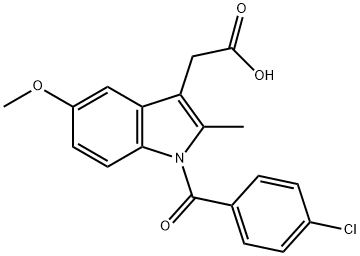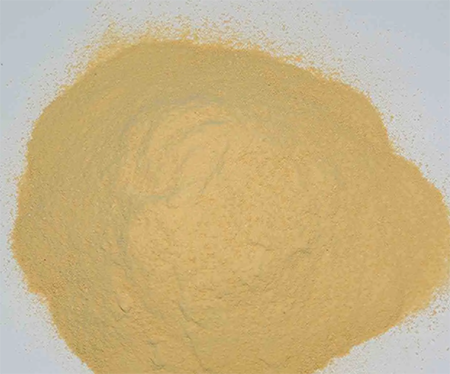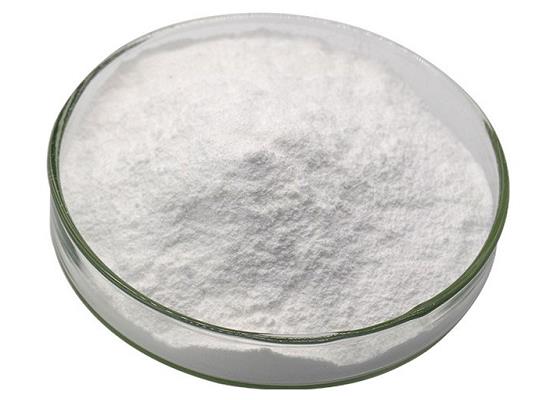Indomethacin: Pharmacokinetics and Mechanism of Action
General Description
Indomethacin, a nonsteroidal anti-inflammatory drug (NSAID), exhibits linear pharmacokinetics with rapid and nearly complete absorption from the gastrointestinal tract. Peak plasma concentrations, typically reached within 0.9-1.5 hours, increase with dose and are dose-proportional. Age-related changes impact renal excretion, while food and antacids can affect absorption to some extent. Indomethacin's high plasma protein binding and presence in synovial fluid indicate its distribution characteristics. Mechanistically, indomethacin's unique actions in conditions like trigeminal autonomic cephalalgias involve modulation of intracranial pressure, cerebral blood flow, and vasoconstrictive effects beyond COX enzyme inhibition. Its potential in managing conditions such as elevated intracranial pressure highlights its distinct therapeutic value.
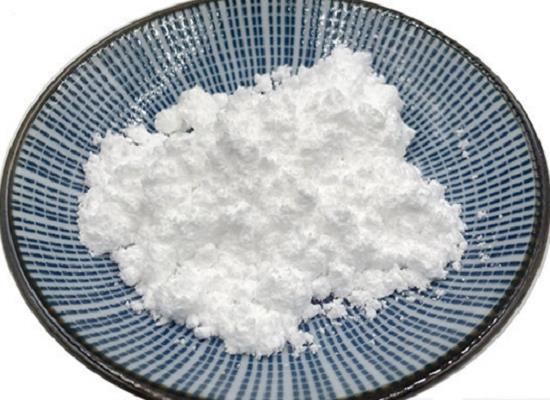
Figure 1. Indomethacin
Pharmacokinetics
Indomethacin is rapidly absorbed from the gastrointestinal tract and following oral administration has virtually 100% bioavailability with peak plasma concentrations following a single dose occurring between 0.9 ± 0.4 and 1.5 ± 0.8 hours in a fasting state. However, as capsule preparations from different formulations, even branded ones, show considerable differences in serum concentrations, it may be expected that the multiple generic formulations will be subject to similar variability. Despite large intersubject variation as well using the same preparation, peak plasma concentrations are dose-proportional and averaged 1.54 ± 0.76 μg/mL, 2.65 ± 1.03 μg/mL, and 4.92 ± 1.88 μg/mL following 25 mg, 50 mg, and 75 mg single doses in fasting subjects, respectively. Mean steady-state plasma concentrations range from 0.39 to 0.63 μg/mL after 25 mg doses 3 times a day. Although there are no precise data on therapeutic range for an anti-inflammatory effect of indomethacin, a therapeutic range of 0.5–3 μg/mL has been suggested.
The extended or sustained release capsules (ER) contain 75 mg of pelletized indomethacin, of which 25 mg is immediately released, and the remaining 50 mg, coated with a slowly dissolving polymer, gradually releases drug over the next several hours. The sustained release preparation was formulated to mitigate the gastrointestinal (GI) side effects and is used as an alternative to conventional capsules. Each capsule contains approximately 300 individual particles with polymer coating dissolving at different rates. The main differences between conventional capsules and the sustained release form are the lower peak concentration and more sustained plasma levels seen with sustained release. After 8 hours following a single, equivalent dose of either, any difference in plasma level of drug disappears. In multiple dose studies, the mean steady-state plasma concentration of a 75 mg sustained release capsule was comparable to that following conventional indomethacin capsules in a dosage of 25 mg 3 times daily (at 6 hour intervals). Relative to a dosing regimen of 25 mg 3 times a day, the bioavailability of the sustained release formulation 75 mg ranges from 93% (single dose data) to 110% (multiple dose data) of the conventional regimen.
In a study comparing oral suspension with capsule, administered with food, a 50 mg dose of the oral suspension is bioequivalent to a single 50 mg conventional capsule. The rate of absorption after rectal administration of the suppository has been reported to be slower than following oral administration of a capsule; however, these studies have been difficult to perform, as retention of the suppository in the rectum was also a variable. A manufacturer reports that bioavailability after rectal administration of the suppository is about 80–90% in clinical studies.1
Mechanism of Action
NSAIDs are known to cross the blood–brain barrier. Indomethacin shows the highest passage of the blood brain barrier when compared to naproxen and ibuprofen, making a central action in headache treatment plausible. In the process of dissecting profiles of the different NSAIDs in regard to their action on COX 1 and/or COX 2, indomethacin was found in in vitro experiments to have a kinetic profile of time dependent tight binding, naproxen shows time dependent weak binding, and ibuprofen acts via competitive inhibition on COX 1 and COX 2. Further differentiation of indomethacin and other NSAIDs activities on COX 1 and COX 2 were made by analysis of the ratio of their ability in blocking either COX 1 or COX 2. The benzoyl group of the compound seems to be structurally relevant to indomethacin’s COX 1 action, as it has been shown that replacement of this group by a 4-bromobenzy group results in a highly selective COX 2 inhibitor. Inhibiting the synthesis of prostaglandins and inflammatory reactions, another mechanism has been found being suppressed in a dose dependent manner by indomethacin. Indomethacin suppressed phospholipase A2 in rabbit leuko-cytes. This mechanism, however, seems not to be exclusive to indomethacin. Adding another mechanism to the inhibition of COX and phospholipase A2, the gluthation S-transferase (GST) is inhibited by indomethacin, as was shown in in-vitro assays.2
Reference
1. Lucas S. The Pharmacology of Indomethacin. Headache. 2016; 56(2): 436-446.
2. Summ O, Evers S. Mechanism of action of indomethacin in indomethacin-responsive headaches. Curr Pain Headache Rep. 2013; 17(4): 327.
You may like
Related articles And Qustion
See also
Lastest Price from Indometacin manufacturers
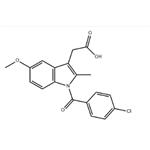
US $1.00-4.00/KG2025-09-11
- CAS:
- 53-86-1
- Min. Order:
- 1KG
- Purity:
- 99%
- Supply Ability:
- 200000KG

US $5.00-0.50/KG2025-05-07
- CAS:
- 53-86-1
- Min. Order:
- 1KG
- Purity:
- 99% hplc
- Supply Ability:
- 500TONS
